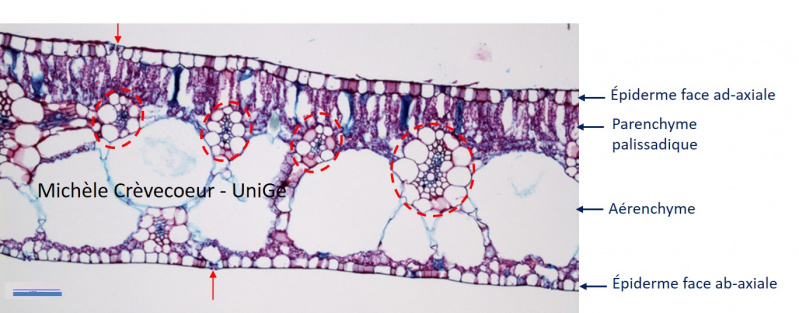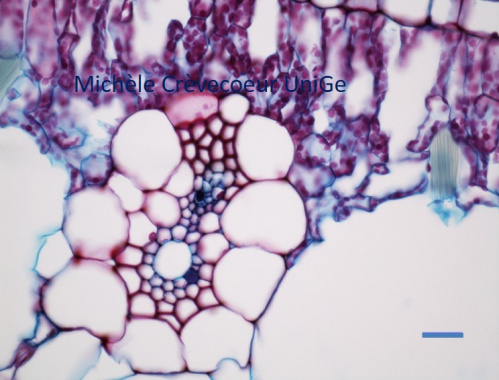Cross section in a leaf of Eichornia crassipes
Eichornia crassipes, water Hyacinth, is a free – floating plant native to South America. It produces leaves in basal clusters or rosettes at water surface. The leaves are thick, leathery with hollow, expanded stalks (petioles) that help leaves to float. Water hyacinth is an aquatic traditional plant, and it is grown as ornamental plant in gardens ponds. This plant show anatomical characteristics of C3 plants but show some characteristics of C4 plants for the photosynthetic process.
The micrographs below illustrate paraffin cross section (8 μm thick) stained with astra blue – fuchsin basic.
Upper micrograph: part of the section with the main tissues. The leaves display upper or adaxial and lower or abaxial uniseriate epidermis (red arrows) with a thin cuticle and stomata on both sides. The mesophyll is heterogeneous with a palisade parenchyma of two to three layers of cells toward the adaxial face. The spongy parenchyma consists in a well – developed aerenchyma with large lacunae. The vascular bundles (dotted red lines) are disposed on a row, a characteristic of monocotyledon. Bottom micrograph: part of the section with a vascular bundle. The vascular bundles are collateral with xylem toward the adaxial side and phloem toward the abaxial face (verifier) and have a developed bundle sheath characteristic of C4 plant.


Anatomical characteristic of an aquatic plant: the thin cuticle of the two epidermis and a well-developed aerenchyma with large lacunae toward ab axial face of the leaf.